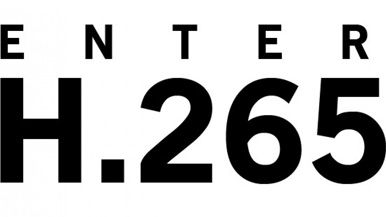Intermittent Issues: The H.26x Format
By Ben Gruchow
June 8, 2016
This is going to function as kind of an intermediary Intermittent Issues column before the final installment of the four (five)-part series initiated last year, because it’s a lot easier to talk about the next wave(s) of home cinema when you can shorthand a lot of the different formats.
ITU Telecommunication Standards
The H.26x video standard, which comprises requirements and parameters for digital video up to and including current HD and Ultra HD video formats (essentially, it’s the thing that makes most of the HD content you watch possible), comes from the International Telecommunication Union’s Standardization Sector, or ITU-T. Its predecessor was the H.120 standard; H.120 had application mostly in videoconferencing, and never received much in the way of wide support owing to coding strategies and protocols that varied by region. The quality of the video itself, owing primarily to poor temporal filtering, was also far enough below grade to be a liability on its own.
H.261 was developed on three core principles: discrete cosine transform (DCT), which is a method of converting a signal into elementary frequency components; differential pulse code modulation (DPCM), which effects a sort of prediction of future samples based on the data from past samples; and motion compensation, which anticipates movement in the frame based on past frames, and a pre-defined set of logical properties, and flags areas of a frame affected by motion to be encoded; the unaffected area is left alone. Motion compensation, when done properly, is incredibly advantageous in efficient video compression. A 2006 presentation on a 2002 Polytechnic University paper helpfully communicates the ratio of efficiency in broad language: proper motion compensation can improve compression quality by a factor of five to ten.
These three principles were transformative; they paved the way for H.261 to become adopted on a widespread level, and all subsequent major video coding standards have been based on them. H.261 also made use of a type of hierarchy that’s mostly been translated to the way digital content displays images now; this hierarchy centers around blocks - some concerned with luminosity and the others concerned with color (i.e. images are made with the use of light and color; this hierarchy quite literally constitutes the building blocks of how we view HD media. I’m going to go sit and face the corner now until I feel less shameful about that pun). The items that occupy the upper level of this hierarchy are GOBs, or groups of blocks; each group of blocks is made of a number of MBs, or macroblocks; each macroblock is made up of four luminosity blocks (luma blocks), and two color blocks (chroma blocks). Together, these blocks form the color space of YCbCr (where Y=luminosity, Cb stands for Chroma-blue, and Cr stands for chroma-red), and we also use the number of blocks to illustrate a concept called subsampling, which - without going into a dedicated article about how sensitively the human eye perceives color versus light - halves the vertical resolution of the chroma channels across the blocks, and we end up at four samplings of luminosity, and two samplings of half-resolution color, or 4:2:0.
This is important to denote here because this arrangement of color and light applies to almost every variant of H.26x, and the more recent codecs build off of this scheme rather than replace it.
Continued:
1
2
3
4




